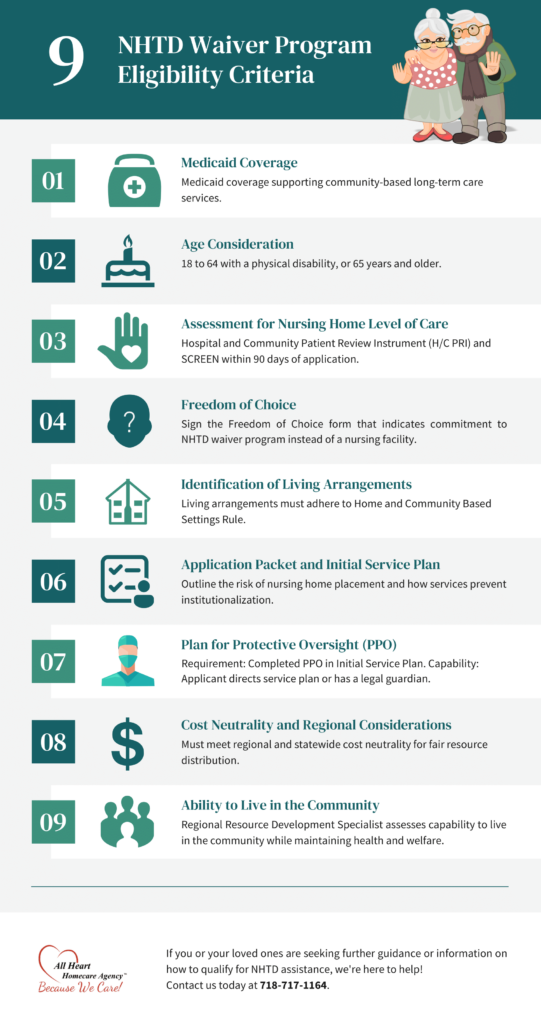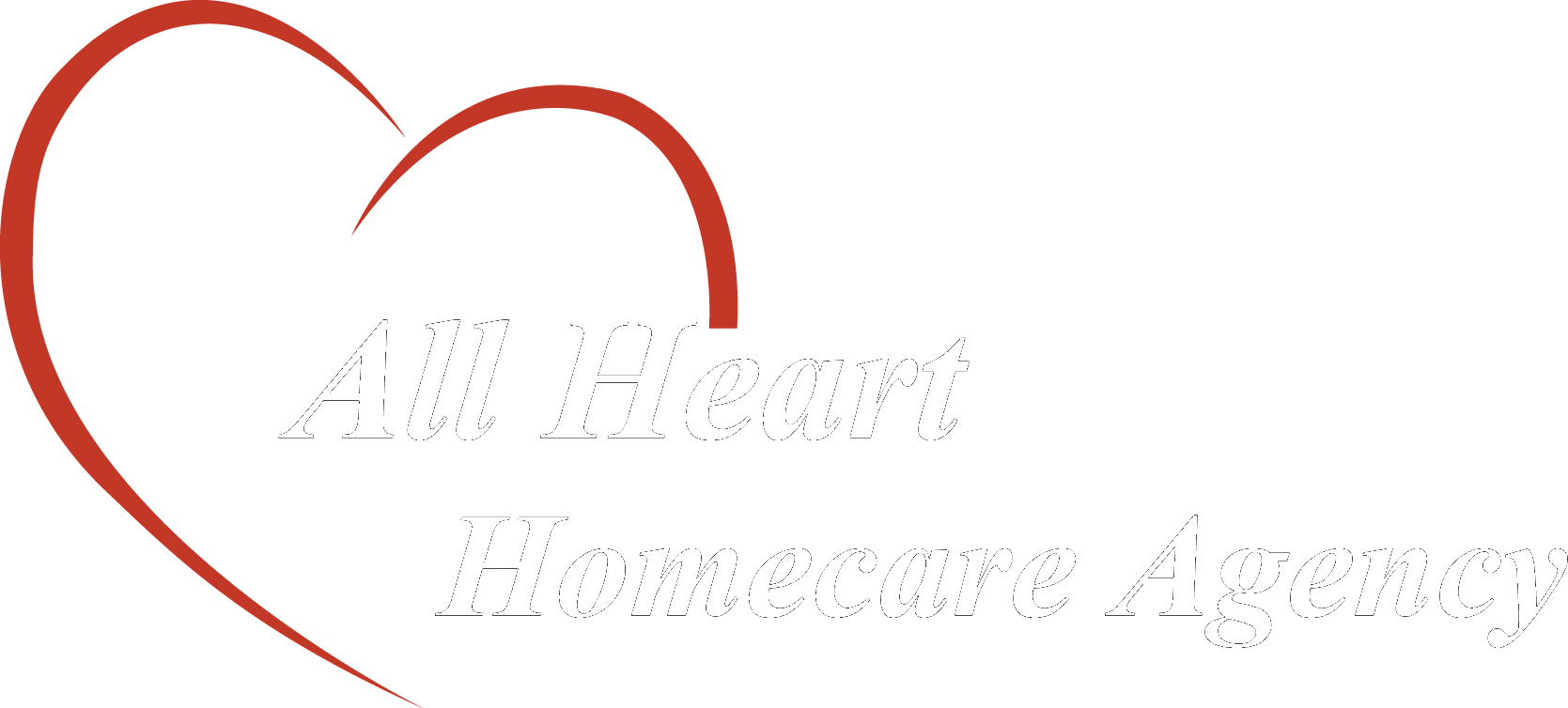Table of contents:
- Assessment for Nursing Home Level of Care
- What is a Nursing Home Level of Care?
- What is involved in a level of care assessment?
- Why is a PRI and SCREEN needed?
- How is NFLOC Determined?
- What factors are taken into consideration in a level of care assessment?
- Freedom of Choice
- Identification of Living Arrangements
- What is the Home and Community Based Services (HCBS) Settings Rule?
- What does the HCBS Settings Rule require?
- Application Packet and Initial Service Plan
- Plan for Protective Oversight (PPO)
- Cost Neutrality and Regional Considerations
- What does cost neutrality mean?
- Ability to Live in the Community
- Discover the key criteria for NHTD eligibility at a glance!
- In Conclusion
The Nursing Home Transition and Diversion (NHTD) Waiver Program, a vital component of Medicaid, plays a crucial role in supporting individuals who prefer to receive long-term care services and supports in their homes and communities rather than in nursing homes. To benefit from this program, it’s essential to understand the eligibility criteria that determine who qualifies for its services.
As per the guidelines provided by the New York State Department of Health, an individual seeking to participate in the NHTD waiver is required to fulfill all of the following criteria:
1. Medicaid Coverage
To qualify for the NHTD waiver, an applicant must be a recipient of Medicaid coverage that supports community-based long-term care services. This includes various coverage types, such as All Services except Nursing Facility Service, Community Coverage with Community-Based Long-Term Care, and Outpatient Coverage with Community-Based Long-Term Care. Verification of Medicaid coverage, obtained from the New York State system, is a prerequisite for the application.
Learn more about Medicaid Eligibility >>>
2. Age Consideration
As for the age requirement, applicants should fall within the age range of 18 to 64 with a physical disability or be 65 years and older at the time of application.
For those under 65, the physical disability can be confirmed through:
- Award letters/determination of:
o Supplemental Security Income (SSI)
o Social Security Disability Insurance (SSDI)
o Railroad Retirement letter for total permanent disability for SSI benefits
Please note that eligibility is limited to individuals with physical disabilities, and additional documentation may be required to verify the existence of such a disability.
b. A letter from the Local Department of Social Services or local disability team (form LDSS 4141) confirming the individual’s physical disability
c. Documentation from the individual’s physician, hospital summaries, or Nursing Home records providing verification of the physical disability
3. Assessment for Nursing Home Level of Care
To be eligible for the NHTD program, individuals must undergo an assessment to determine if they require a nursing home level of care.
What is a Nursing Home Level of Care?
A “Nursing Home Level of Care” (NHLOC), also known as a Nursing Facility Level of Care (NFLOC), serves as a standard for assessing the care requirements necessary for Medicaid nursing home admissions. Additionally, it functions as a criterion for individuals to qualify for long-term care services and support through the NHTD Waiver Program.
What is involved in a level of care assessment?
The NHTD Waiver Program applicants must undergo an assessment using the Hospital and Community Patient Review Instrument (H/C PRI) and SCREEN, completed by a medical professionals, social workers, or designated evaluators appointed by the state’s Medicaid agency, within 90 days of the application. This assessment takes into account the applicant’s medical, cognitive, mental health, and functional issues.
Why is a PRI and SCREEN needed?
The PRI is basically a ‘picture’ of a patient’s current medical, physical and cognitive status. All NYS skilled nursing facilities require a PRI and Screen to enable them to determine a patient’s condition for long term placement.
The information collected from the PRI is used to determine Medicare/Medicaid reimbursement for nursing homes in New York State. This data is audited after being submitted in order to ensure its accuracy.
The purpose of a Screen is to determine the patient’s ability to return to the community or qualify for long term placement.
How is NFLOC Determined?
These long-term care assessments generally consist of a compiled list of questions. The most common functional consideration is one’s ability / inability to perform one’s Activities of Daily Living (bathing, dressing, grooming, etc.). The questions may ask how often (how many times per day / how many days per week), for how long (how many minutes), and what type of assistance (verbal cues, assistive devices / adaptive equipment, hands on assistance, 100% dependent) a person requires.
Questions regarding one’s health, mental functioning, behavior, and family support may also be included. With these questionnaires, a state may set a minimum score (a threshold number) and if the candidate reaches that score, it indicates they meet the Level of Care need.
What factors are taken into consideration in a level of care assessment?
- Risks of falling or experiencing abuse in their current living situation
- Medical condition necessitating a feeding tube or the administration of IV medication
- Ability to independently administer medications
- Mental health or behavioral problems
4. Freedom of Choice
Applicants must sign the Freedom of Choice form, expressing their decision to participate in the NHTD waiver program. This form is a crucial indicator of the individual’s commitment to participate in the waiver program rather than reside in a nursing facility.
5. Identification of Living Arrangements
Applicants need to identify the actual location and living arrangements where they will reside while participating in the waiver program. The living arrangement must comply with Home and Community Based (HCB) Settings Rule.
What is the Home and Community Based Services (HCBS) Settings Rule?
In 2014, the Centers for Medicare and Medicaid Services (CMS) at the Department of Health and Human Services issued the HCBS Settings Rule to require that every state ensure that services delivered to seniors and people with disabilities living in the community – outside of institutions – meet minimum standards for integration, access to community life, choice, autonomy, and other important consumer protections.
What does the HCBS Settings Rule require?
The rule applies to all settings (i.e. place where seniors and people with disabilities live, work, or spend time) that receive HCBS funding, and requires that the setting:
- is integrated in the greater community,
- supports the individual’s full access to the greater community, including opportunities to seek employment, work in competitive integrated settings, engage in community life, control personal resources, and receive services in the community,
- is selected by the individual from among different setting options, including non-disability specific options and an option for a private unit in a residential setting,
- ensures an individual’s rights to privacy, dignity, respect, and freedom from coercion and restraint,
- optimizes individual initiative, autonomy, and independence in making life choices, including in daily activities, physical environment, and personal associations,
- facilitates individual choice regarding services and supports and who provides them.
The requirements are designed to ensure that people with disabilities living in the community have access to the same kind of choice and control over their own lives as those not receiving Medicaid HCBS funding.
6. Application Packet and Initial Service Plan
The applicant, in collaboration with the Service Coordinator, must complete and submit an Application Packet, including the Initial Service Plan. This plan outlines why the individual is at risk for nursing home placement and how the requested services will prevent institutionalization. The potential applicant must need at least one waiver service.
7. Plan for Protective Oversight (PPO)
Applicants must have a completed Plan for Protective Oversight (PPO) included in their Initial Service Plan. They should either be capable of directing their service plan or have a legal guardian available for this purpose.
8. Cost Neutrality and Regional Considerations
Services agreed upon in the Initial Service Plan (ISP) must meet regional and statewide cost neutrality.
What does cost neutrality mean?
“Cost Neutrality” means that the Department of Health (DOH) needs to ensure that the total expenses for NHTD waiver services and other Medicaid services provided to all waiver participants do not exceed what would have been spent if those individuals had been in a nursing home instead of receiving waiver services.
In essence, the aim is to balance the costs of providing community-based services through the NHTD waiver in a way that is financially equivalent to, or less than, the costs that would have been incurred if the individuals received care in a nursing home. This approach allows for flexibility in serving a diverse group of people with varying needs while staying within established budget constraints.
To be more specific:
- The goal of cost neutrality is to avoid increasing overall costs by providing home and community-based services instead of nursing home care.
- The comparison is made against the cost that would be incurred by the state’s Medicaid program for these individuals if they were in a nursing home.
- The determination of cost neutrality is done on a regional basis, aggregating the costs of all individuals in a specific region.
- The Department of Health assigns a regional cap, which represents the maximum allowable total expenditures for waiver services in that region.
- Regional Resource Development Specialists (RRDSs) are responsible for managing cost neutrality in their respective regions.
9. Ability to Live in the Community
Applicants must be capable of living in the community while maintaining their health and welfare, as determined by the Regional Resource Development Specialist.
Discover the key criteria for NHTD eligibility at a glance!
We’ve compiled a concise list to make it easy for you to understand the essential requirements. Whether you’re exploring options or guiding others through the process, this quick reference guide provides clarity on the eligibility standards for NHTD services. Check out our infographic for a simplified overview of the criteria you need to know.

In Conclusion
Eligibility for the Nursing Home Transition and Diversion (NHTD) Waiver Program involves a comprehensive evaluation of factors such as Medicaid coverage, age, nursing home level of care assessment, freedom of choice, living arrangements, and more. The program is designed to support individuals who prefer long-term care services in their homes and communities. Understanding and meeting the eligibility criteria, including documentation and assessments, is crucial for applicants. By adhering to the requirements, individuals can enhance their chances of participating in the NHTD waiver program and receiving the necessary support to live independently in the community while maintaining their health and welfare.
At All Heart Homecare, we understand the importance of personalized care that allows individuals to maintain their independence while receiving necessary support. If you or your loved ones are seeking further guidance or information on how to qualify for NHTD assistance, we’re here to help! Contact us today at 718-717-1164.












